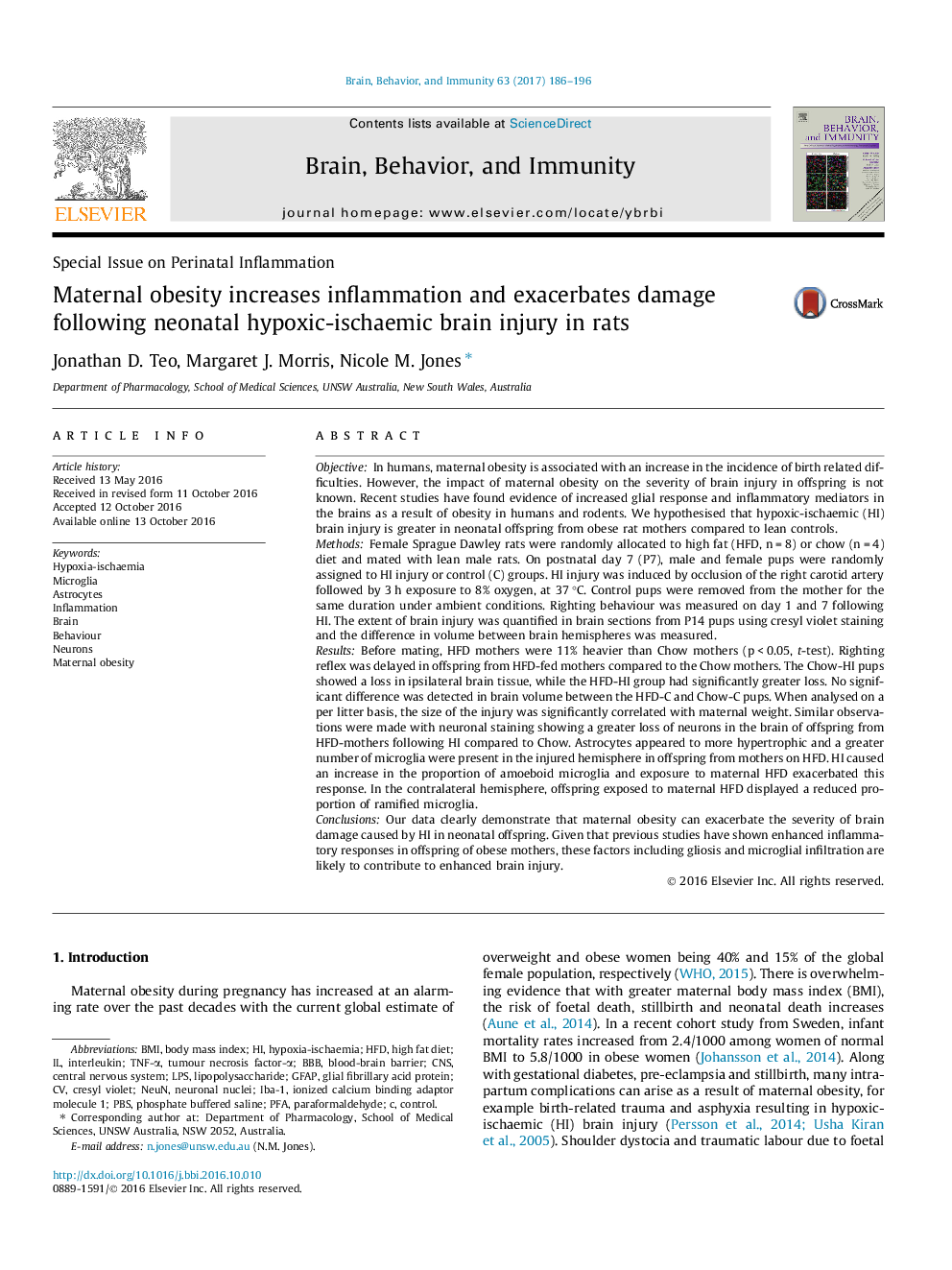| Article ID | Journal | Published Year | Pages | File Type |
|---|---|---|---|---|
| 5040673 | Brain, Behavior, and Immunity | 2017 | 11 Pages |
â¢Maternal obesity delayed the righting reflex in P8 pups independent of HI.â¢Maternal obesity increased brain tissue loss in offspring following HI.â¢Maternal obesity exacerbated the glial response to HI.â¢Maternal obesity and HI increased the number of microglia in offspring.â¢HI injury shifted microglial phenotype in offspring, and was worsened with HFD.
ObjectiveIn humans, maternal obesity is associated with an increase in the incidence of birth related difficulties. However, the impact of maternal obesity on the severity of brain injury in offspring is not known. Recent studies have found evidence of increased glial response and inflammatory mediators in the brains as a result of obesity in humans and rodents. We hypothesised that hypoxic-ischaemic (HI) brain injury is greater in neonatal offspring from obese rat mothers compared to lean controls.MethodsFemale Sprague Dawley rats were randomly allocated to high fat (HFD, n = 8) or chow (n = 4) diet and mated with lean male rats. On postnatal day 7 (P7), male and female pups were randomly assigned to HI injury or control (C) groups. HI injury was induced by occlusion of the right carotid artery followed by 3 h exposure to 8% oxygen, at 37 °C. Control pups were removed from the mother for the same duration under ambient conditions. Righting behaviour was measured on day 1 and 7 following HI. The extent of brain injury was quantified in brain sections from P14 pups using cresyl violet staining and the difference in volume between brain hemispheres was measured.ResultsBefore mating, HFD mothers were 11% heavier than Chow mothers (p < 0.05, t-test). Righting reflex was delayed in offspring from HFD-fed mothers compared to the Chow mothers. The Chow-HI pups showed a loss in ipsilateral brain tissue, while the HFD-HI group had significantly greater loss. No significant difference was detected in brain volume between the HFD-C and Chow-C pups. When analysed on a per litter basis, the size of the injury was significantly correlated with maternal weight. Similar observations were made with neuronal staining showing a greater loss of neurons in the brain of offspring from HFD-mothers following HI compared to Chow. Astrocytes appeared to more hypertrophic and a greater number of microglia were present in the injured hemisphere in offspring from mothers on HFD. HI caused an increase in the proportion of amoeboid microglia and exposure to maternal HFD exacerbated this response. In the contralateral hemisphere, offspring exposed to maternal HFD displayed a reduced proportion of ramified microglia.ConclusionsOur data clearly demonstrate that maternal obesity can exacerbate the severity of brain damage caused by HI in neonatal offspring. Given that previous studies have shown enhanced inflammatory responses in offspring of obese mothers, these factors including gliosis and microglial infiltration are likely to contribute to enhanced brain injury.
